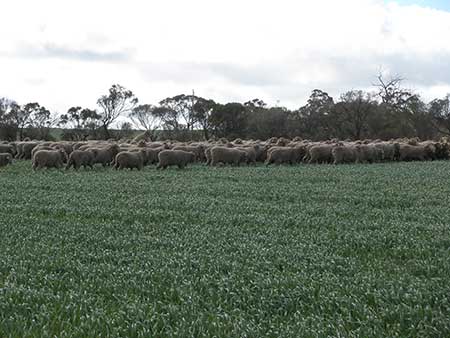The long-term operational strategy for a livestock enterprise should be well defined for each year however, as the season progresses often a range opportunities and challenges are presented which require some change to the original plans. These changes can help mitigate risks, as well as capitalising on opportunities that are presented. Given the current seasonal conditions there are several opportunities and challenges that should be considered.
Assessing what opportunities and challenges may exist in terms of pasture production is one of the most important aspects to consider as it impacts on profitability this year and potentially next year if it is not managed correctly. There are a myriad of pasture and feeding options that can be considered at any one point and to assess the value of each requires a clear understanding of how each option can fit within your enterprise.
We are often keen to explore new pastures or grazing crop options that produce large amounts of feed, however we must ensure that the timing of the feed
production is appropriate. For example, considering many traditional forage brassica varieties for autumn lambing flocks seeking feed options for winter
and early spring should not be high on the agenda, as whilst they can produce a huge amount of feed they are typically best suited to spring and summer
production. Additionally, it is important to consider where many of these pastures are best suited geographically. South Australia has winter dominant
rainfall pattern and many pastures originating or promoted from central or northern areas of Australia will struggle to produce the amount of feed
suggested in this environment.
Most areas of South Australia have experienced above average rainfall for 2017 allowing a good profile of soil moisture compared to many other seasons. However, medium term forecasts from the Bureau of Meteorology are indicating a warm dry winter. Given the current seasonal conditions utilising sown cereals, even with the addition of vetch for improved feed quality could be a great way to boost feed production as they will grow early and utilise the current moisture available. It is critical to convert moisture to feed at every opportunity. Sown feeds that are conserved throughout winter can also provide a valuable feed resource for young stock later in the season, even as a standing crop in summer.
To identify the amount or area of feed required for different classes of stock requires a feed budget. Feed budgeting is a proactive tool that can allow you to forward plan feed resources and have confidence that stock numbers and estimated feed availability align properly. It can also allow you to compare different scenarios depending on the seasonal forecast, for example whether stock numbers should be increased or reduced, whether to reallocate the current area of crop or whether an opportunity exists to trade stock. For many producers conducting feed budgets earlier this year was the trigger to confidently put ewes into containment and conserve paddock feed for grazing now.
To capitalise on the best opportunities and manage challenges in our system requires a good understanding of our enterprise demands and what value a change will provide. Most importantly, we must also have a system in place for measuring the performance of the enterprise to review and learn from the decisions made.
Details: Hamish Dickson, Livestock Consultant, AgriPartner Consulting. P: 0427 446 499, E: hamish@agripartner.com.au